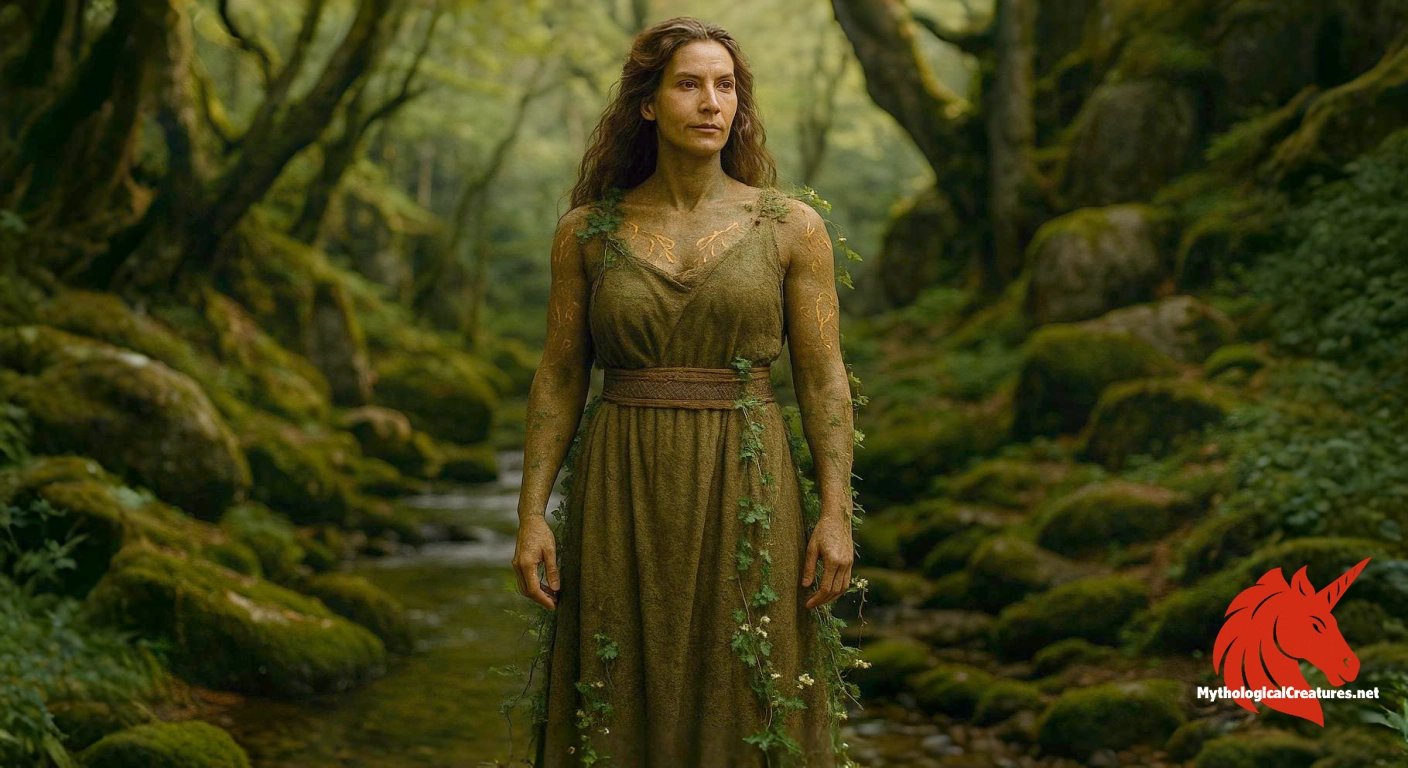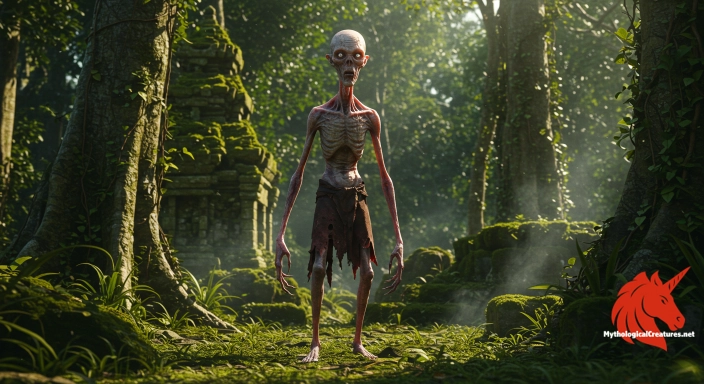Jörð: Jörð is the Norse goddess and personification of the earth.

Jörð
Jörð - Her name is employed in skaldic poetry as a kenning for land, symbolising the earth's fertility and foundational role in Norse cosmology.
Origins & First Encounters
Jörð is an enigmatic and integral figure in Norse mythology, personifying the very essence of the earth itself. She embodies the raw, fertile power of the landscape and is revered as a timeless force within a complex divine cosmos. Her origins are interwoven with ancient creation myths, where the earth is seen as both a nurturing mother and a primordial presence. Her role is accentuated by her connection to the pantheon, notably as the mother of the thunder god Thor, which underscores the deep link between the elemental forces of nature and divine lineage. Beyond being a literal deity, she is also seen allegorically as the embodiment of fertile land, nurturing and sustaining the world. This double aspect of her character—a tangible goddess and a metaphor for the earth—has played a significant part in defining her legacy. Early attestations in sources such as the Poetic Edda, Prose Edda, and Gesta Danorum have enshrined her identity within the canon of Norse literature. Over time, her myth has continued to resonate, offering modern audiences an allegory of the enduring bond between nature and divinity.
Source Texts & Tale Variants
Ancient texts provide the most substantive glimpses into Jörð’s mythological persona, with narratives contained in the Poetic Edda, the Prose Edda, and the Gesta Danorum documenting her role and relationships. These narratives introduce her in a multifaceted manner, noting her connections with other principal deities and cementing her stature within the divine hierarchy. In these works, she is portrayed both as Odin’s consort and as a powerful mother, whose lineage gives rise to some of the most pivotal figures in Norse lore. The mention of Jörð in skaldic poetry further expands her influence, as her name becomes a poetic device representing land and natural abundance. Distinct versions within these sources reveal subtle variations in her depiction, reflecting the fluidity of oral tradition and regional storytelling. As scribes and poets revisited her tale, each retelling added layers of metaphor and symbolism to her persona. These sources, although originating from different periods and cultural influences, collectively underscore her importance as a conduit between the divine and the natural world. They also highlight the interplay between literal myth and allegorical imagery in conveying the mysteries of the earth. Thus, the variegated textual tradition surrounding Jörð illustrates a rich tapestry of narrative threads that have evolved over time.
Form & Powers
Descriptions of Jörð have traditionally conveyed her essence through symbolism rather than precise physical detail, evoking images that mirror the natural world. Her appearance is often imagined as radiant and boundless, with features that allude to the vibrant colours of fertile fields and the deep, earthen tones of mature soil. Artistic renditions sometimes depict her with flowing tresses that resemble the undulating lines of rolling hills or the golden shimmer of a sunlit plain. Her eyes are imagined as deep and reflective, evoking the ancient forests and misty landscapes that stretch across the Norse wilderness. There is an air of serene strength about her, hinting at both nurturing calm and the unyielding power of the earth. In some representations, her attire is interwoven with natural motifs—floral patterns, leaves, and stones—that symbolise the cyclical renewal of life. The allegorical emphasis on her stature, often shown in monumental form, reflects the vast expanse of the earth itself. Though the surviving ancient texts provide few direct physical descriptions, later cultural elaborations have richly adorned her image with these evocative details. Such portrayals serve as a continual reminder of her intrinsic link with the land and its many moods.
Regional Faces
Regional interpretations of Jörð reveal a dynamic interaction between a unifying myth and local cultural expressions, with subtle differences emerging across Scandinavian territories. In the frost-bound regions of the North, she is often envisioned as a stark and elemental force, echoing the raw landscapes of icy wildernesses. In contrast, communities with deep agrarian roots tend to celebrate her as the nurturing spirit that fosters bountiful harvests and pastoral abundance. Local legends have sometimes imbued her with qualities that reflect the immediate environment, from the brooding power of volcanic soil to the gentle caress of spring meadows. In Danish literary tradition, for instance, references found in Saxo Grammaticus’s accounts blend classical narrative elements with uniquely regional perspectives. Icelandic retellings frequently highlight her enigmatic connection to the land, weaving her persona into the very fabric of the local environment. The usage of her name in skaldic kennings across various parts of Scandinavia further evidences her wide-ranging influence. These diverse regional adaptations not only reinforce her central role as the personification of the earth but also illustrate how myth evolves in dialogue with the local landscape. In each variant, the essence of Jörð remains steadfast, even as the details of her character are artfully reshaped by local traditions and environmental nuances.
Cultural Parallels
Jörð’s character as an earth deity invites compelling comparisons with similar figures found in various mythological traditions around the world. She is often juxtaposed with Gaia from Greek mythology, who similarly represents the fertile, life-giving qualities of the earth. Both deities embody a dual nature, being at once nurturing and formidable, and are considered progenitors of other divine and mortal beings. In other cultural contexts, such as the Hindu tradition’s representation of Prithvi, one finds analogous themes where the earth is celebrated as a living, sovereign entity. These cross-cultural echoes emphasise the universal human response to nature, where the land is both revered and mythologised. Iconographic traditions in different cultures have often depicted these earth deities with similar attributes, such as flowing robes, lush adornments of vegetation, and expansive, maternal forms. Comparative analysis reveals that while the names and detailed narratives may differ, the symbolic role of the earth as a nurturing yet dynamic force remains a constant. This shared motif underscores an enduring archetypal image that transcends geographical and temporal boundaries. In examining these parallels, it becomes evident that Jörð holds her own place within a global tableau of earth personifications, further enriching the understanding of her mythological significance.
Legacy & Modern Evolution
From antiquity to the present day, the myth of Jörð has experienced a fascinating evolution, reflecting changing cultural and environmental sensibilities. Originally confined to the pages of the Poetic and Prose Edda and the chronicles of Saxo Grammaticus, her persona began as a poetic embodiment of the earth. Over time, as Norse mythology became interwoven with art, literature, and the emerging modern interest in ancient spirituality, she was reimagined as a potent emblem of nature’s resilience and bounty. Her transformation from a mythic figure into a symbol of ecological consciousness speaks to the enduring power of her story. Contemporary interpretations often cast her in a light that highlights the urgent need to reconnect with the natural world, making her relevant in modern discussions on sustainability and environmental stewardship. Artists and writers today frequently draw upon her myth to evoke the intrinsic value of the natural landscape and the cyclical rhythms of life. This modern legacy enriches her ancient identity, blending traditional myth with current ecological narratives. As a result, Jörð continues to be celebrated both as a timeless goddess and as an inspirational emblem for those who seek to honour the earth in all its complexity and grandeur.
Interesting Fact
An intriguing detail about Jörð is that her name functions both as her identity and as a poetic synonym for the very earth, underscoring her pervasive influence in Norse cultural expression.
Quick Creature Info
Origin:
Associations:
Our Mythic Legendary Rating:

Also Sometimes Known As:
Habitat:
Supernatural Powers:
Physical Attributes:
Abilities:
Behavior:
Lore:
References
Discover Another Mythical Legend You May Not Have Heard Of?
Uncover the mysteries of ancient folklore and expand your knowledge of legendary beings from cultures around the world.
Dare to Meet the Suanggi....
Mythical Disclaimer: The images and data on this site are derived from various historical and literary sources, but we have found that many myths often have multiple versions and interpretations across references, sometimes contradictory. As a result, these creature depictions are artistic interpretations—imaginative blends of folklore, legend, and a dash of AI guesswork. Because creature descriptions vary widely, our illustrations and accompanying information represent our best effort to honor mythology while bridging creative gaps. Enjoy these interpretations—just remember, we've done our best to respect the stories and validate available data, but in the realm of mythology, details often shift, imagination leads the way, and nothing is ever set in stone!
Curated by the Mythological Creatures Team (rev. May 2025)
